Abstract
A novel method is used to demonstrate the presence of diffusion boundary layers around erythrocytes following rapid mixing in a stopped-flow spectrophotometer and to estimate the apparent dimensions of the diffusion boundary layers. Pink erythrocyte ghosts labeled on their external surfaces with tetramethyl rhodamine isothiocyanate (TRITC) were mixed in a stopped-flow apparatus with 50 mM NaI in Ringer's solutions. I- is an effective collisional quencher of TRITC fluorescence. TRITC fluorescence after flow stopped decreased monoexponentially with time. The concentration of I- at the cell surface as a function of time was estimated from the dependence of TRITC fluorescence on I- concentration in steady-state experiments. The kinetics of the increase in I- concentration at the cell surface was fit to two diffusional models: a planar erythrocyte ghost bounded by planar diffusion boundary layer and a spherical erythrocyte surrounded by a spherical shell diffusion boundary layer. The planar model best fits the experimental data with a diffusion boundary layer 4.68 microns thick. Using the spherical model the experimental data is best fit by a 6.9 microns diffusion boundary layer.
Full text
PDF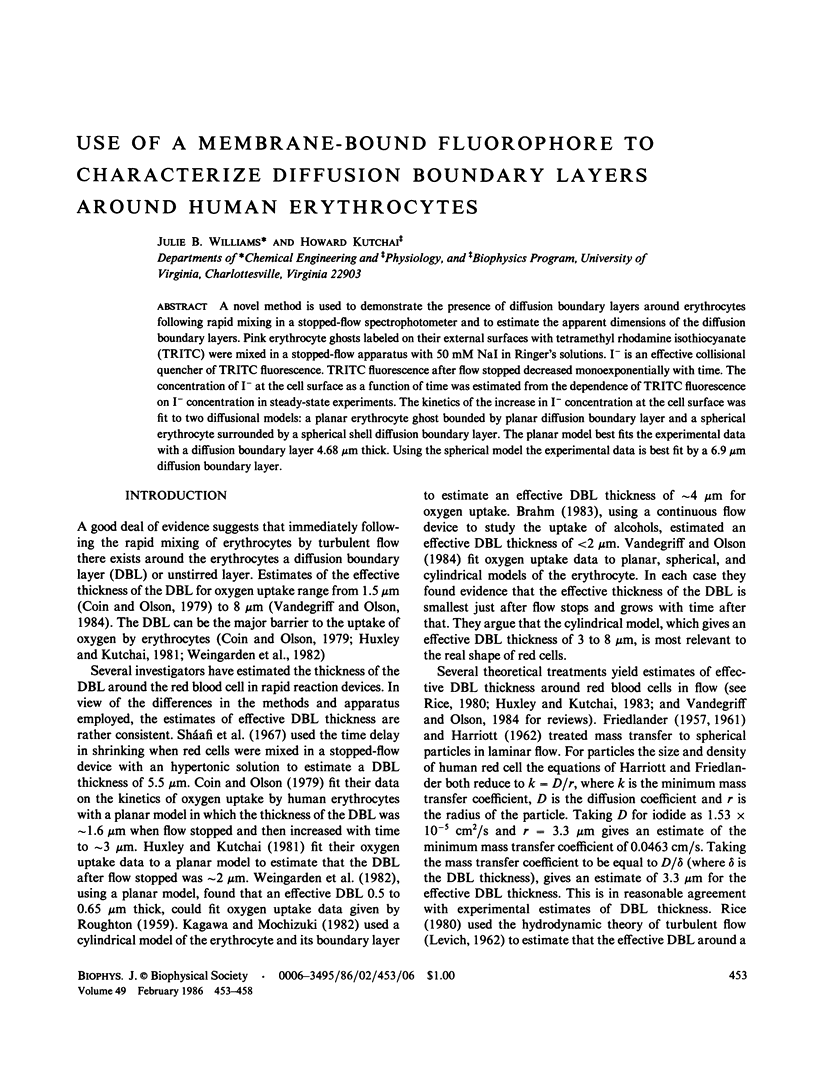
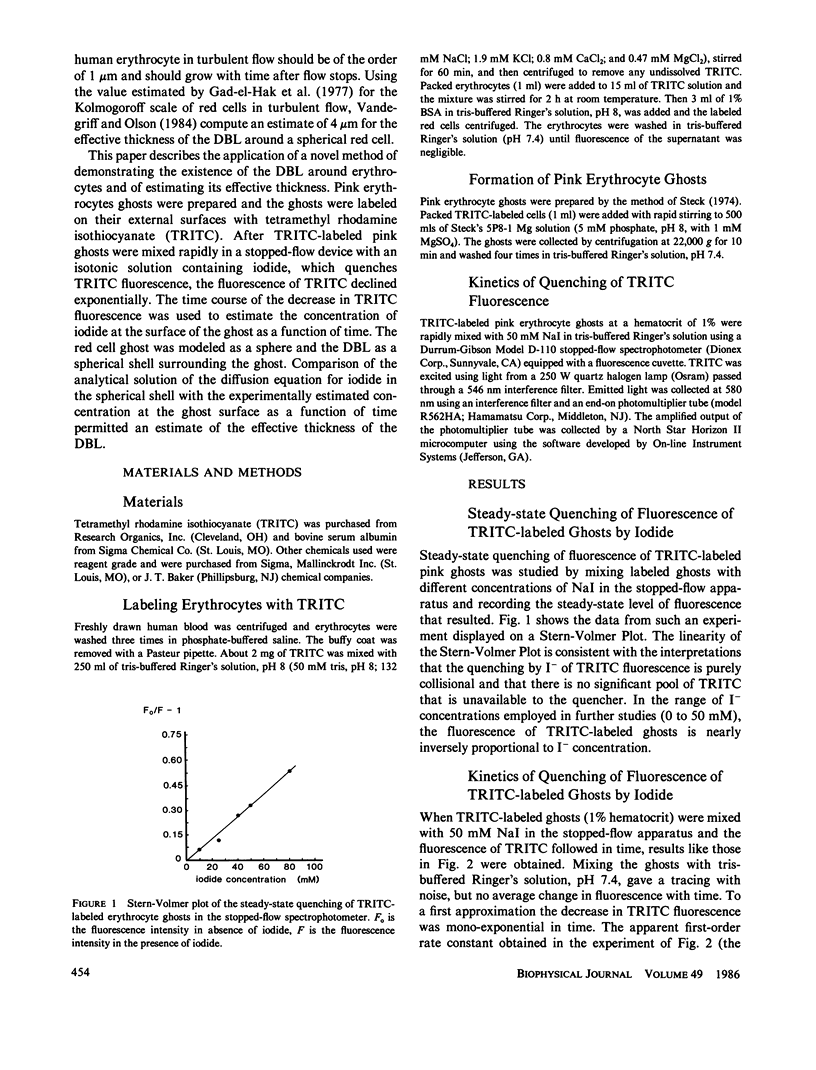
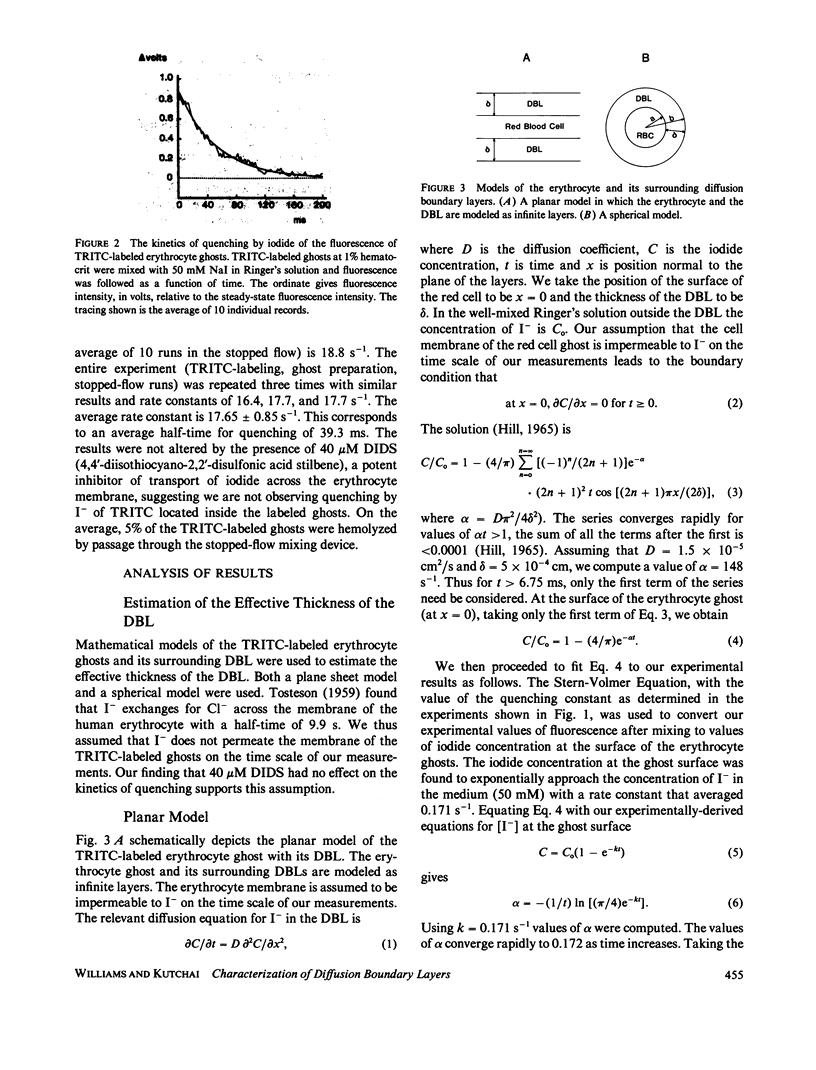
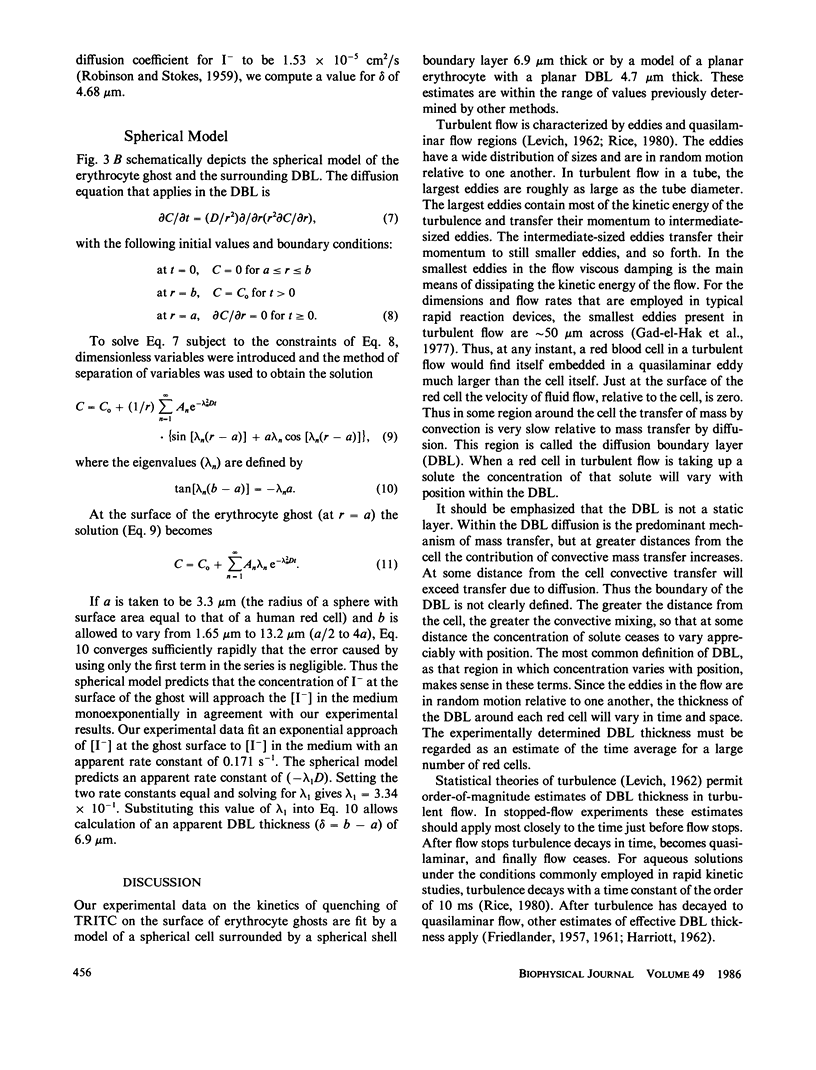

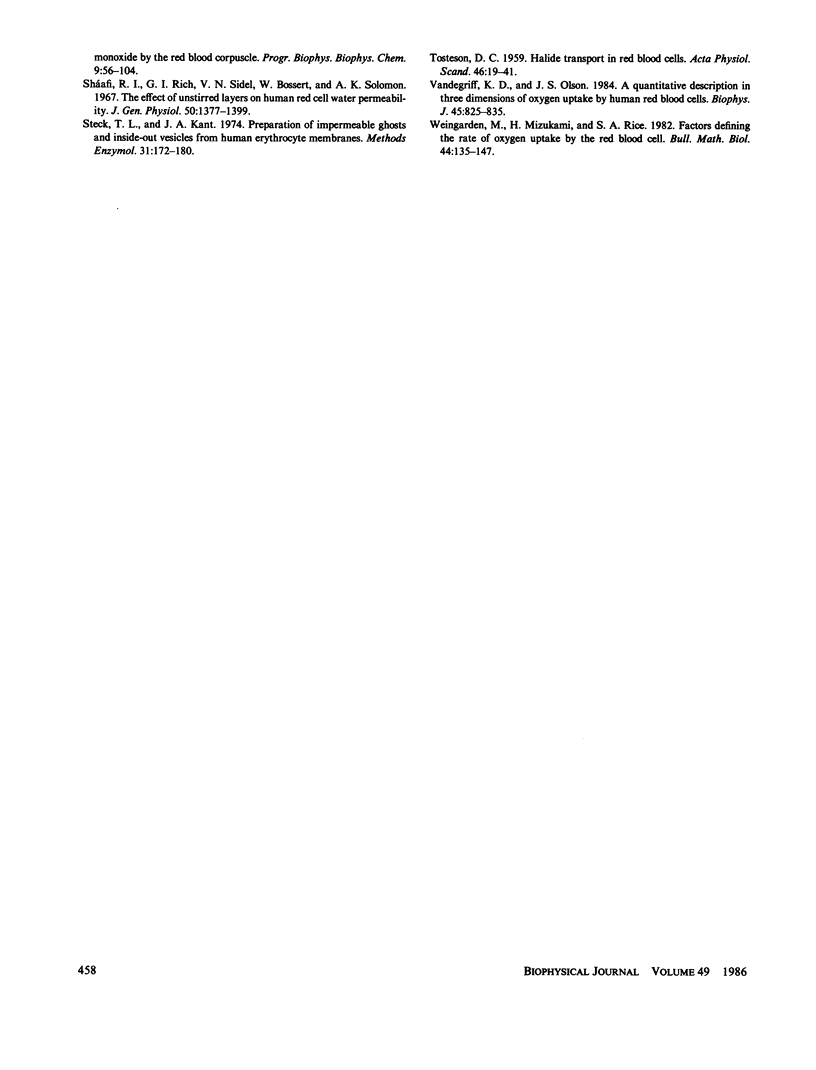
Selected References
These references are in PubMed. This may not be the complete list of references from this article.
- Brahm J. Permeability of human red cells to a homologous series of aliphatic alcohols. Limitations of the continuous flow-tube method. J Gen Physiol. 1983 Feb;81(2):283–304. doi: 10.1085/jgp.81.2.283. [DOI] [PMC free article] [PubMed] [Google Scholar]
- Coin J. T., Olson J. S. The rate of oxygen uptake by human red blood cells. J Biol Chem. 1979 Feb 25;254(4):1178–1190. [PubMed] [Google Scholar]
- Gad-El-Hak M., Morton J. B., Kutchal H. Turbulent flow of red cells in dilute suspensions. Effect on kinetics of O2 uptake. Biophys J. 1977 Jun;18(3):289–300. doi: 10.1016/S0006-3495(77)85614-2. [DOI] [PMC free article] [PubMed] [Google Scholar]
- Huxley V. H., Kutchai H. Effect of diffusion boundary layers on the initial uptake of O2 by red cells. Theory versus experiment. Microvasc Res. 1983 Jul;26(1):89–107. doi: 10.1016/0026-2862(83)90058-4. [DOI] [PubMed] [Google Scholar]
- Huxley V. H., Kutchai H. The effect of the red cell membrane and a diffusion boundary layer on the rate of oxygen uptake by human erythrocytes. J Physiol. 1981 Jul;316:75–83. doi: 10.1113/jphysiol.1981.sp013773. [DOI] [PMC free article] [PubMed] [Google Scholar]
- Kagawa T., Mochizuki M. Numerical solution of partial differential equation describing oxygenation rate of the red blood cell. Jpn J Physiol. 1982;32(2):197–218. doi: 10.2170/jjphysiol.32.197. [DOI] [PubMed] [Google Scholar]
- Rice S. A. Hydrodynamic and diffusion considerations of rapid-mix experiments with red blood cells. Biophys J. 1980 Jan;29(1):65–77. doi: 10.1016/S0006-3495(80)85118-6. [DOI] [PMC free article] [PubMed] [Google Scholar]
- Sha'afi R. I., Rich G. T., Sidel V. W., Bossert W., Solomon A. K. The effect of the unstirred layer on human red cell water permeability. J Gen Physiol. 1967 May;50(5):1377–1399. doi: 10.1085/jgp.50.5.1377. [DOI] [PMC free article] [PubMed] [Google Scholar]
- Steck T. L., Kant J. A. Preparation of impermeable ghosts and inside-out vesicles from human erythrocyte membranes. Methods Enzymol. 1974;31:172–180. doi: 10.1016/0076-6879(74)31019-1. [DOI] [PubMed] [Google Scholar]
- Vandegriff K. D., Olson J. S. A quantitative description in three dimensions of oxygen uptake by human red blood cells. Biophys J. 1984 Apr;45(4):825–835. doi: 10.1016/S0006-3495(84)84226-5. [DOI] [PMC free article] [PubMed] [Google Scholar]
- Weingarden M., Mizukami H., Rice S. A. Factors defining the rate of oxygen uptake by the red blood cell. Bull Math Biol. 1982;44(1):135–147. doi: 10.1007/BF02459424. [DOI] [PubMed] [Google Scholar]


